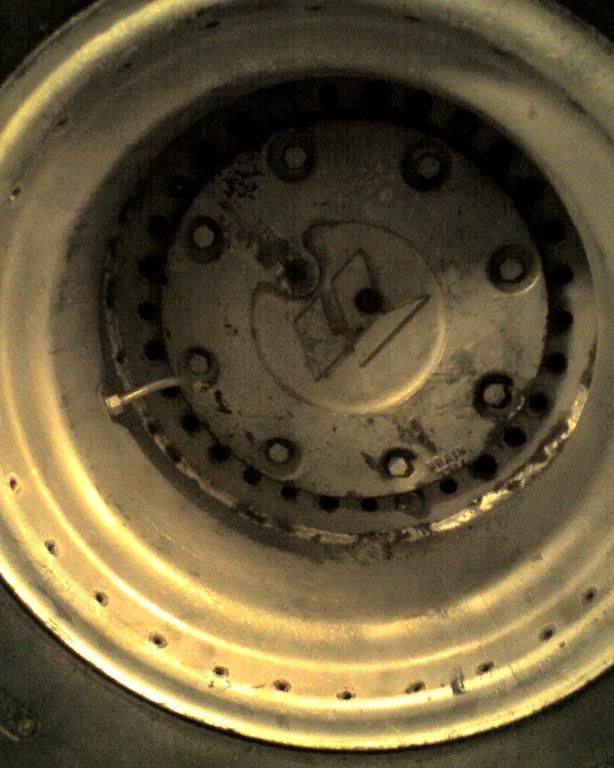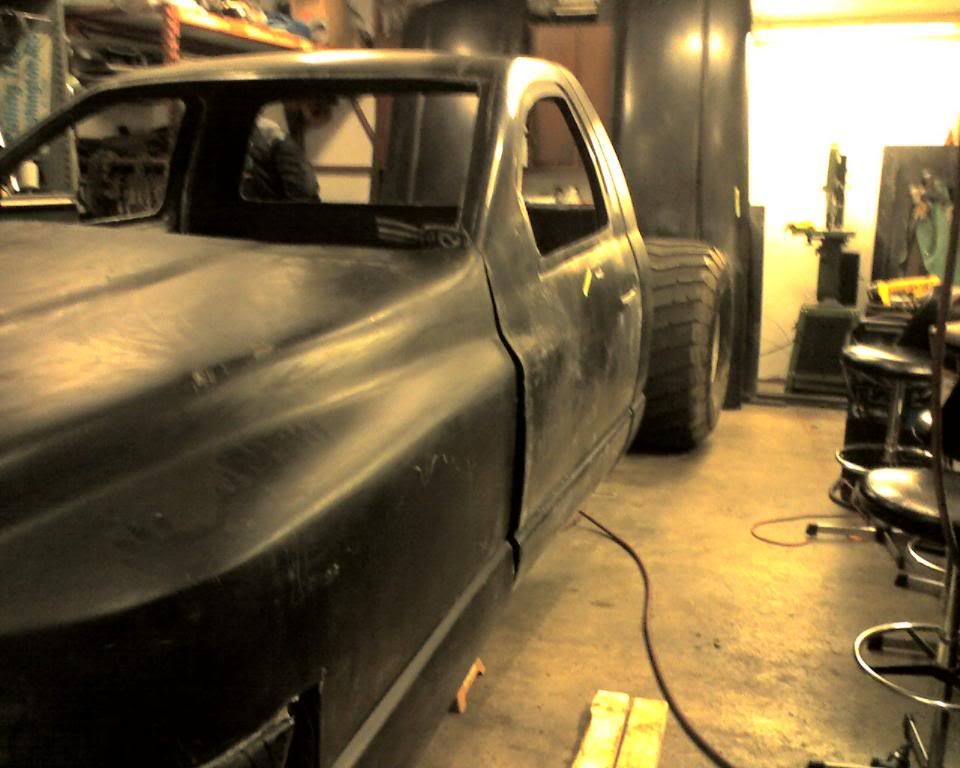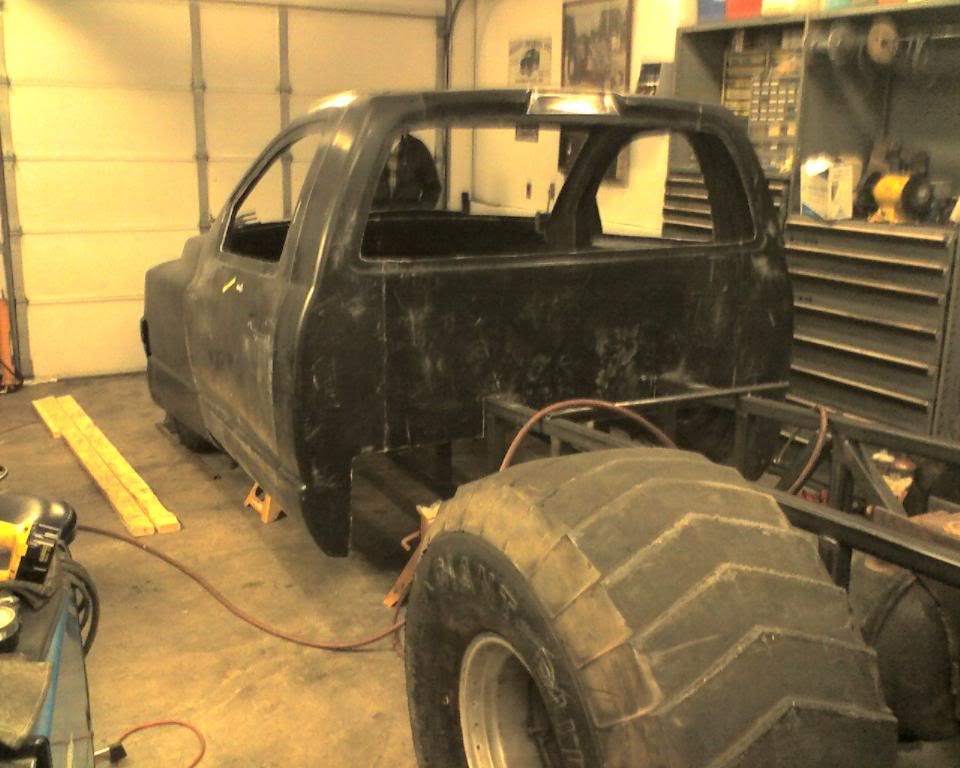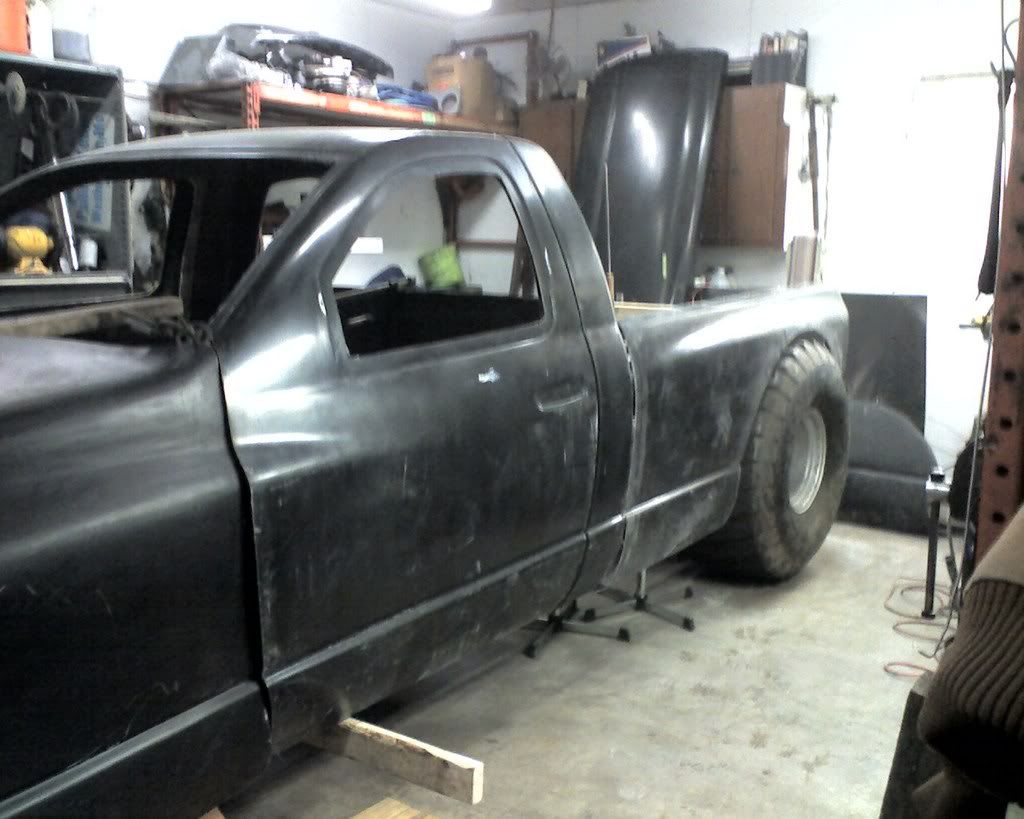Sledpuller
Comp Diesel Sponsor
Modified Diesel
The Modified Diesel (MD) class is designed for off-road, fullbodied, severely modified pickup trucks built for pulling.
Modified Rear-Wheel Drive Exhibition: The Modified Rear-Wheel-Drive Puller Exhibition (RW/E) class is the same as Modified Diesel except that the trucks must be
rear-wheel drive only and the hitch height limit is increased to 30 inches.
Outlaw Diesel Exhibition
The Outlaw Diesel Exhibition (OD/E) class is the same as Modified Diesel except that the trucks may have any engine installed in them.
Designations: MD
RW/E
OD/E
Weight breaks: MD: 7600 lbs. Weight is with driver
RW/E: 7200 lbs. Weight is with driver
OD/E: 7600 lbs. Weight is with driver
REGULATIONS:
Ballast: Ballast is permitted. Hanging weights may not extend more than 60 inches from the centerline of the front axle.
Batteries: Batteries must be securely mounted. They may not be located in the driver compartment.
Body: Any full-size truck body style is permitted. It must be painted and reasonably free from rust. Customizing, chopping, channeling, etc., is permitted, but the body must retain the full-bodied appearance. A shield across the frame under the front of the motor shielding the damper and engine fan area is required. If fiberglass body panels are utilized forward of the firewall, a .060” steel or aluminum shield extending the full length of the engine from the top of the frame rail to a level equal to the deck height or the top of the fender well, whichever is greater, must be in place. Shielding must be installed around the turbo and will be inspected by the NADM technical department for sound construction and installation. The vehicle must have at least two functional doors. The doors must open and close from inside and outside. Glass may be replaced with Lexan or other shatterproof material of 1/8 inch minimum thickness. The side windows need not be operational. The hood must be closed and securely latched while the vehicle is hooked to the sled.
Brakes: Front disc brakes are mandatory.
Cooling System: Any sealed system is permitted.
Credentials: All drivers must have a valid state drivers license.
Driver Restraint System: A three-inch-wide driver restraint system labeled as meeting SFI Spec 16.1 is mandatory and must be worn snugly. The system includes a crotch strap and must be updated at two-year intervals from date of manufacture.
Drive shaft Loops: All trucks must have at least six inch wide u-joint shields around the rear u-joint constructed of at least 1/4 inch steel or 3/8 inch aluminum that will safely contain the u-joint and the ends of each shaft. In addition there will be at least one shaft loop in the middle of the drive shaft. All shields must be securely mounted to the vehicle. Any front shaft u-joint that is visible from the side of the truck must be shielded
to contain the u-joint and the end of the shaft.
Engine: The engine block must be factory appearing. It must accept a cylinder head from a one-ton or smaller pickup truck compression ignition engine. For class OD/E, the engine may be any engine. NITROUS OXIDE and other oxygen extenders as well as the use of PROPANE is also prohibited. All system components MUST be removed from the truck.
Exhaust: Exhaust must be directed away from the fuel tank and driver and exit upward. Two 3/8 inch diameter bolts must be installed through the exhaust pipe in a cross pattern
within one inch of each other as close to the final turbo as is practical.
Fire Extinguisher System: A fire extinguisher system is permitted. It must be securely mounted.
Firewall: Each vehicle must be equipped with an OEM or minimum 0.024 inch steel firewall, extending from side to side of the body and from the top of the engine compartments upper seal (hood, cowl, or deck) to the bottom of the floor and/
or belly pan. The firewall must provide a bulkhead between the engine and/or fuel tank and driver compartment. All openings must be sealed with metal-excluding grommets. The use of magnesium is prohibited.
Floor: Each vehicle in competition must be equipped with an OEM or minimum 0.024 inch steel floor pan that extends the full length and width of the driver compartment. Non-OEM floor pans must have cross members (minimum two inch by two inch, 0.083 inch wall thickness square tubing) installed between the frame rails for proper seat and driver restraint system installation and support. All openings must be sealed
with metal-excluding grommets. The use of fiberglass and/or magnesium is prohibited.
Fuel: The fuel must be pump #1/#2 diesel only. Soy/Biodiesel fuel is permitted.
Fuel Shutoff: All trucks must be equipped with a driver operated fuel shutoff capable of blocking fuel flow to the injection pump. A three-way dump valve is recommended.
Fuel System: Location: All fuel tanks, lines, pumps, valves, etc. must be located outside of the driver compartment and within the confines of the frame and/or steel body. Fuel pressure gauge isolators, with steel-braided line, may be mounted on
the firewall.
Lines: All non-OEM fuel lines (including gauge and/or data recorder lines) must be metallic, steel-braided or NADM accepted woven or woven-push lock. Fuel lines (except steel-braided lines) in the flywheel/bell housing area must be enclosed in a 16 inch length of steel tubing of 1/8 inch minimum wall thickness and be securely mounted as a protection against fuel-line rupture.
Harmonic Balancer: If present, units must meet SFI Spec 18.1.
Helmet: Drivers must wear a helmet meeting Snell 90, 95, 2000, K98 or SFI Spec 31.1 or 41.1 standards. The retention strap must be securely and snugly fastened. The helmet must have the appropriate certification sticker affixed inside it.
Hitch: The hitch must be constructed of solid material that is properly attached and braced. The hooking point must be at least 44 inches rearward from the centerline of the rear axle. The hitch must be horizontal to the ground and stationary in all directions. The hitch’s height from the ground may not exceed 26 inches. The hooking point must have a minimum 3.750 inch inside diameter opening for the sled hook. The hooking point will be measured to the center of the clevis loop. The final decision rests with the NADM Technical Department. For class RW/E, the hitch height is increased to 30 inches.
Interior: The vehicle must be equipped with one seat for the driver; it must be properly installed.
Intermediate Shafts: On vehicles so equipped, all intermediate drive shafts must be fully enclosed with a 5/16-inch steel or 3/8-inch aluminum shield. The shield must cover the entire length of the shaft and the universal joints and yokes at each end.
Master Cutoff: A sled-and driver-operated spring-loaded emergency air shut off is mandatory. The cable must terminate into a two inch diameter steel ring.
Protective Clothing: Drivers must wear a jacket and pants meeting SFI specification 3.2A/5 or 3.2A/15, gloves meeting SFI specification 3.3/15, and shoes or boots meeting SFI specification 3.3/5. Protective clothing exceeding these specifications is permitted. The protective clothing must be labeled with the proper SFI specification. The NADM patch must be located in the upper-most position on the left sleeve of the fire suit or jacket.
Rear Axle: Rear axle bolts must be covered by a cap or shield.
Suspension: Rigid or 4-link suspensions are permitted.
Tires: Tires may be no more than 36 inches tall.
Tow Vehicles: Tow vehicles are permitted.
Transmission, Automatic: Any non-OEM floor-mounted automatic transmission shifter must be equipped with a spring-loaded positive reverse lockout device to prevent
the shifter from accidentally being put into reverse gear. A functional neutral safety switch is mandatory. All transmission lines must be metallic or high-pressure-type hose. All vehicles must be equipped with a transmission shield meeting SFI Spec 4.1 and must be labeled accordingly. A blanket-type shield is permitted; it must be appropriately labeled as meeting SFI Spec 4.1 and it must extend from the rear of the block to the front of tail housing with a minimum six-inch overlap where it is fastened. All non-blanket-type shields must incorporate two (or one, per manufacturers instructions) 3/4 inch by 1/8 inch straps that bolt to the shield on each side and pass under the transmission pan unless the transmission pan is labeled as meeting SFI Spec 4.1. All vehicles must be equipped with a flex plate meeting SFI Spec 29.1 and be covered by a flex plate shield meeting SFI Spec 30.1.
Transmission, Manual: A clutch meeting SFI Spec 1.2 or 1.3 is mandatory. All transmissions must be clutch assisted. Sequential shifters are prohibited. All vehicles equipped with a manual transmission must have a flywheel shield labeled
as meeting minimum SFI Spec 6.3 or greater. Applications for which an SFI Spec flywheel shield is not available may use a properly attached SFI 4.1 or 4.2 blanket that completely covers the bell housing; it must be attached to the block and extend rearward to the transmission with a minimum six inch overlap where it is fastened.
Turbocharger, Supercharger: Turbochargers are limited to triple-stage configuration. Turbocharger(s) must be enclosed in the engine compartment; they may not be visible from outside the truck. Turbochargers that are not under the hood must be completely shrouded except for inlet/exhaust pipes. Turbochargers under fiberglass hoods must be completely shrouded except for inlet/exhaust pipes. Shrouding must be equal to or greater than .060 steel or aluminum.
Water Injection: Water injection is permitted. Alcohol, methanol, and all other flammables are prohibited.
Commercially available lube pump allowed.
Wheelbase: The minimum allowed wheelbase is 90 inches; the maximum allowed is 180 inches. The maximum wheelbase variation from left to right is one inch; the
measurement will be made using a X pattern (LF-RR and RFLR). The maximum allowed tread width is 102 inches.
The Modified Diesel (MD) class is designed for off-road, fullbodied, severely modified pickup trucks built for pulling.
Modified Rear-Wheel Drive Exhibition: The Modified Rear-Wheel-Drive Puller Exhibition (RW/E) class is the same as Modified Diesel except that the trucks must be
rear-wheel drive only and the hitch height limit is increased to 30 inches.
Outlaw Diesel Exhibition
The Outlaw Diesel Exhibition (OD/E) class is the same as Modified Diesel except that the trucks may have any engine installed in them.
Designations: MD
RW/E
OD/E
Weight breaks: MD: 7600 lbs. Weight is with driver
RW/E: 7200 lbs. Weight is with driver
OD/E: 7600 lbs. Weight is with driver
REGULATIONS:
Ballast: Ballast is permitted. Hanging weights may not extend more than 60 inches from the centerline of the front axle.
Batteries: Batteries must be securely mounted. They may not be located in the driver compartment.
Body: Any full-size truck body style is permitted. It must be painted and reasonably free from rust. Customizing, chopping, channeling, etc., is permitted, but the body must retain the full-bodied appearance. A shield across the frame under the front of the motor shielding the damper and engine fan area is required. If fiberglass body panels are utilized forward of the firewall, a .060” steel or aluminum shield extending the full length of the engine from the top of the frame rail to a level equal to the deck height or the top of the fender well, whichever is greater, must be in place. Shielding must be installed around the turbo and will be inspected by the NADM technical department for sound construction and installation. The vehicle must have at least two functional doors. The doors must open and close from inside and outside. Glass may be replaced with Lexan or other shatterproof material of 1/8 inch minimum thickness. The side windows need not be operational. The hood must be closed and securely latched while the vehicle is hooked to the sled.
Brakes: Front disc brakes are mandatory.
Cooling System: Any sealed system is permitted.
Credentials: All drivers must have a valid state drivers license.
Driver Restraint System: A three-inch-wide driver restraint system labeled as meeting SFI Spec 16.1 is mandatory and must be worn snugly. The system includes a crotch strap and must be updated at two-year intervals from date of manufacture.
Drive shaft Loops: All trucks must have at least six inch wide u-joint shields around the rear u-joint constructed of at least 1/4 inch steel or 3/8 inch aluminum that will safely contain the u-joint and the ends of each shaft. In addition there will be at least one shaft loop in the middle of the drive shaft. All shields must be securely mounted to the vehicle. Any front shaft u-joint that is visible from the side of the truck must be shielded
to contain the u-joint and the end of the shaft.
Engine: The engine block must be factory appearing. It must accept a cylinder head from a one-ton or smaller pickup truck compression ignition engine. For class OD/E, the engine may be any engine. NITROUS OXIDE and other oxygen extenders as well as the use of PROPANE is also prohibited. All system components MUST be removed from the truck.
Exhaust: Exhaust must be directed away from the fuel tank and driver and exit upward. Two 3/8 inch diameter bolts must be installed through the exhaust pipe in a cross pattern
within one inch of each other as close to the final turbo as is practical.
Fire Extinguisher System: A fire extinguisher system is permitted. It must be securely mounted.
Firewall: Each vehicle must be equipped with an OEM or minimum 0.024 inch steel firewall, extending from side to side of the body and from the top of the engine compartments upper seal (hood, cowl, or deck) to the bottom of the floor and/
or belly pan. The firewall must provide a bulkhead between the engine and/or fuel tank and driver compartment. All openings must be sealed with metal-excluding grommets. The use of magnesium is prohibited.
Floor: Each vehicle in competition must be equipped with an OEM or minimum 0.024 inch steel floor pan that extends the full length and width of the driver compartment. Non-OEM floor pans must have cross members (minimum two inch by two inch, 0.083 inch wall thickness square tubing) installed between the frame rails for proper seat and driver restraint system installation and support. All openings must be sealed
with metal-excluding grommets. The use of fiberglass and/or magnesium is prohibited.
Fuel: The fuel must be pump #1/#2 diesel only. Soy/Biodiesel fuel is permitted.
Fuel Shutoff: All trucks must be equipped with a driver operated fuel shutoff capable of blocking fuel flow to the injection pump. A three-way dump valve is recommended.
Fuel System: Location: All fuel tanks, lines, pumps, valves, etc. must be located outside of the driver compartment and within the confines of the frame and/or steel body. Fuel pressure gauge isolators, with steel-braided line, may be mounted on
the firewall.
Lines: All non-OEM fuel lines (including gauge and/or data recorder lines) must be metallic, steel-braided or NADM accepted woven or woven-push lock. Fuel lines (except steel-braided lines) in the flywheel/bell housing area must be enclosed in a 16 inch length of steel tubing of 1/8 inch minimum wall thickness and be securely mounted as a protection against fuel-line rupture.
Harmonic Balancer: If present, units must meet SFI Spec 18.1.
Helmet: Drivers must wear a helmet meeting Snell 90, 95, 2000, K98 or SFI Spec 31.1 or 41.1 standards. The retention strap must be securely and snugly fastened. The helmet must have the appropriate certification sticker affixed inside it.
Hitch: The hitch must be constructed of solid material that is properly attached and braced. The hooking point must be at least 44 inches rearward from the centerline of the rear axle. The hitch must be horizontal to the ground and stationary in all directions. The hitch’s height from the ground may not exceed 26 inches. The hooking point must have a minimum 3.750 inch inside diameter opening for the sled hook. The hooking point will be measured to the center of the clevis loop. The final decision rests with the NADM Technical Department. For class RW/E, the hitch height is increased to 30 inches.
Interior: The vehicle must be equipped with one seat for the driver; it must be properly installed.
Intermediate Shafts: On vehicles so equipped, all intermediate drive shafts must be fully enclosed with a 5/16-inch steel or 3/8-inch aluminum shield. The shield must cover the entire length of the shaft and the universal joints and yokes at each end.
Master Cutoff: A sled-and driver-operated spring-loaded emergency air shut off is mandatory. The cable must terminate into a two inch diameter steel ring.
Protective Clothing: Drivers must wear a jacket and pants meeting SFI specification 3.2A/5 or 3.2A/15, gloves meeting SFI specification 3.3/15, and shoes or boots meeting SFI specification 3.3/5. Protective clothing exceeding these specifications is permitted. The protective clothing must be labeled with the proper SFI specification. The NADM patch must be located in the upper-most position on the left sleeve of the fire suit or jacket.
Rear Axle: Rear axle bolts must be covered by a cap or shield.
Suspension: Rigid or 4-link suspensions are permitted.
Tires: Tires may be no more than 36 inches tall.
Tow Vehicles: Tow vehicles are permitted.
Transmission, Automatic: Any non-OEM floor-mounted automatic transmission shifter must be equipped with a spring-loaded positive reverse lockout device to prevent
the shifter from accidentally being put into reverse gear. A functional neutral safety switch is mandatory. All transmission lines must be metallic or high-pressure-type hose. All vehicles must be equipped with a transmission shield meeting SFI Spec 4.1 and must be labeled accordingly. A blanket-type shield is permitted; it must be appropriately labeled as meeting SFI Spec 4.1 and it must extend from the rear of the block to the front of tail housing with a minimum six-inch overlap where it is fastened. All non-blanket-type shields must incorporate two (or one, per manufacturers instructions) 3/4 inch by 1/8 inch straps that bolt to the shield on each side and pass under the transmission pan unless the transmission pan is labeled as meeting SFI Spec 4.1. All vehicles must be equipped with a flex plate meeting SFI Spec 29.1 and be covered by a flex plate shield meeting SFI Spec 30.1.
Transmission, Manual: A clutch meeting SFI Spec 1.2 or 1.3 is mandatory. All transmissions must be clutch assisted. Sequential shifters are prohibited. All vehicles equipped with a manual transmission must have a flywheel shield labeled
as meeting minimum SFI Spec 6.3 or greater. Applications for which an SFI Spec flywheel shield is not available may use a properly attached SFI 4.1 or 4.2 blanket that completely covers the bell housing; it must be attached to the block and extend rearward to the transmission with a minimum six inch overlap where it is fastened.
Turbocharger, Supercharger: Turbochargers are limited to triple-stage configuration. Turbocharger(s) must be enclosed in the engine compartment; they may not be visible from outside the truck. Turbochargers that are not under the hood must be completely shrouded except for inlet/exhaust pipes. Turbochargers under fiberglass hoods must be completely shrouded except for inlet/exhaust pipes. Shrouding must be equal to or greater than .060 steel or aluminum.
Water Injection: Water injection is permitted. Alcohol, methanol, and all other flammables are prohibited.
Commercially available lube pump allowed.
Wheelbase: The minimum allowed wheelbase is 90 inches; the maximum allowed is 180 inches. The maximum wheelbase variation from left to right is one inch; the
measurement will be made using a X pattern (LF-RR and RFLR). The maximum allowed tread width is 102 inches.




